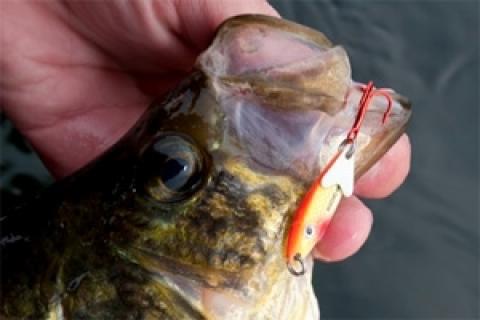
 Chasing crappie is one of my favorite autumn activities. Fish stack-up and are willing biters, most days anyways. There are many reliable tactics that work this time of year, but a spoon is tough to beat. I most often cast and jig spoons in the 1/8-ounce range, but carry heavier and lighter versions to be prepared. Here are some tips for chucking metal for papermouths.
Chasing crappie is one of my favorite autumn activities. Fish stack-up and are willing biters, most days anyways. There are many reliable tactics that work this time of year, but a spoon is tough to beat. I most often cast and jig spoons in the 1/8-ounce range, but carry heavier and lighter versions to be prepared. Here are some tips for chucking metal for papermouths.
Deep Vertical Jigging
A spoon is a great tool to work structure ledges, flats and bottom depressions with precision when crappie move deep. Straight and slab spoons are recommended as they sink quickly, which helps bypass unproductive water and rapidly get into the strike zone. Whether you still fish or slow drift, the flash, flutter, and thump that spoons produce when vertically jigged gets the attention of big slabs with autumn-inspired hunger pains.
Spoons shine just as bright for catching suspending fish. Quality electronics will display fish location in the water column as well as the lure, making jigging a video-game like adventure.
Sifting Through Salad
Although stellar for straight-down tactics over deep structure, spoons are just as deadly when cast. Some of my biggest fall crappie have fallen victim to a spoon worked along a deep weedline. It's impressive too how many spoons will sidestep weed hang-ups.
Cast over the bed, along its edge, and out into adjacent deep water. I count the bait down, trying different depths until I pinpoint where fish are holding around the greenery. Some days they are right beneath the surface, other times halfway down or close to bottom. Positioning will vary too over the course of the day as weather and light conditions change. Two reliable retrieves are reel-pause or lift-fall sequences. Keep a feel on the spoon as crappie regularly strike while it sinks.
Be sure to give spoons a try for crappie this autumn. You'll like the results.
- 6996 views

